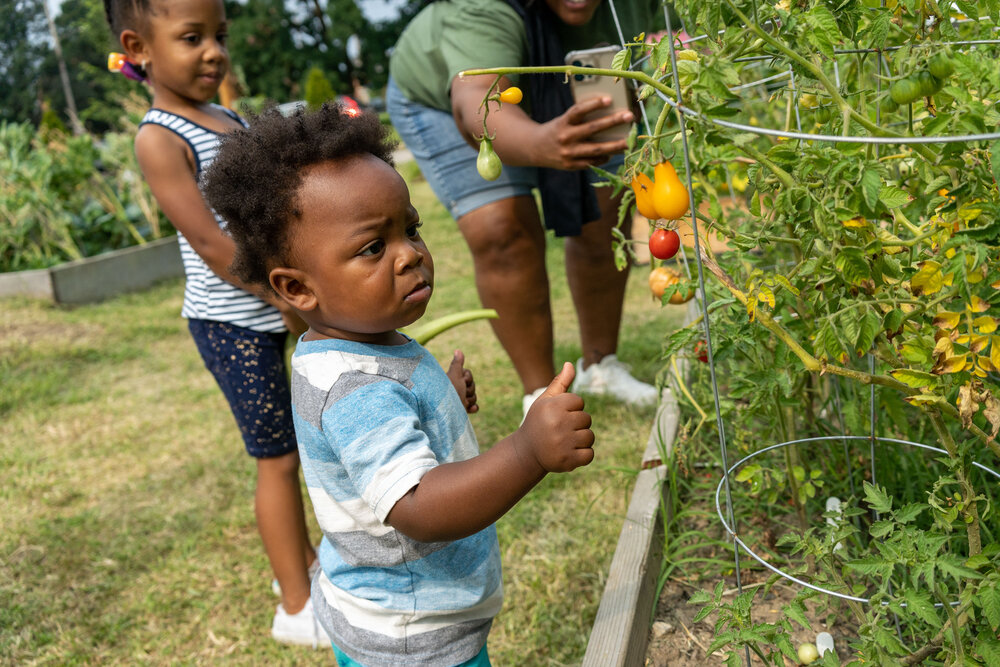September 17, 2021
The Land recently spoke with members of the Promise team about the initiative's dedication to the community, and how ambassadors are working to make positive change in the neighborhood.
The full article is reprinted below:
Gregory Burnett | September 16, 2021
In 1851, the Sisters of Charity of St. Augustine arrived in Cleveland from France. Their mission was to serve communities that lacked proper healthcare, schooling, and other social welfare services.
It didn’t take long for them to make Cleveland’s Central neighborhood a point of interest. Today, 170 years later, that reinvestment continues to bear fruit with help from what is now known as the Sisters of Charity Foundation of Cleveland.
The U.S. Department of Education created the “Promise Neighborhoods” program in 2009. The initiative was conceived to support education, social, and medical health programs in underserved communities. The Sisters of Charity Foundation took that idea and duplicated the model, raised the funds, and came up with their own “Promise” initiative.
Richaun Bunton, managing director of that initiative, said his program is grounded in the St. Augustine philosophy but also takes inspiration from Jeffrey Canada, president of New York’s Harlem Children’s Zone.
“[W]e have since grown to find our niche,” Bunton said. “We’ve become good at engaging residents and helping them lead the change that they wish to see in their neighborhood.”
An eclectic mix of support
In keeping with the original vision of the St. Augustine sisters, the “Promise” program in Cleveland is open exclusively to Central neighborhood residents.

A child gazes at tomatoes. Contributed photo from C.O.P.E.
Offerings include helping parents register children for kindergarten; finding quality daycare; addressing school absenteeism; career coaching; art activities; mental health support, and college financial aid services.
Participants are as young as four and as old as 70 years old. Residents receive support from no fewer than 80 ambassadors trained to lead in specific areas of need. The initiative enhances its offerings by connecting participants to experts within its network.
An example would be Andrea Johnson, ambassador of gardening, who, along with students and teachers from East Technical High School in the Cleveland Metropolitan School District, planted seeds that reaped a harvest of tomatoes, peppers, cabbage, and watermelon.
The project has two missions. In the case of Johnson’s work, it’s a learning experience for those who’ve never planted a seed. In addition, it’s a way for those living in a food desert to obtain fresh produce.
An extra component to further the mission
To further its mission, Promise created C.O.P.E. (Central Opportunities for Purposeful Engagement) last May. According to Promise, C.O.P.E. is an intergenerational summer leadership camp designed to train the next generation of peer leaders in Central.
“It was mainly started because of the devastation caused by the Covid-19 pandemic,” says Dawn Glasco, manager of engagement and social innovation at Cleveland Central Promise Neighborhood, an initiative to improve educational outcomes in the city.

Visitors admire handmade masks. Contributed photo from C.O.P.E
“Families were dealing with deaths of loved ones from the virus, [and] the way schools transitioned from in-class learning to homeschooling…caused additional issues for families lacking the proper tools, such as Wi-Fi. We just saw people trying to adjust emotionally, financially, and physically. So, we wanted to offset some of the emotional stress.”
According to Glasco, graduates of the C.O.P.E. leadership camp move on to become peer leaders and help others learn to reduce stress. They identify those reluctant to come forward with issues to be a part of a personal support group. They also help participants identify and achieve personal goals.
In August 2021, C.O.P.E. held an introductory event on E. 39th St in Cleveland. In addition to ambassador recruiting and training, it featured health screenings and Covid -19 vaccines, as well as art exhibits, some relating to Central’s economic issues and the Covid-19 pandemic.
A few ideas for a community steeped in history.
Central is a mixed-income community, however, and a significant number of families face financial challenges. The neighborhood is rich in history, however. It has been home to Langston Hughes, Jesse Owens, Carl, and Louis Stokes, and Judge Sara Harper.
It’s also still capable of inspiring passion.
Kareemah Rose, ambassador for mental health and a former Girl Scout leader from Central, was interested in deepening her involvement with Promise. She previously worked as a coordinator for the Girl Scouts of Northeast Ohio and saw that many of the girls in her circle were from Central. That, along with her ability to forge trusting relationships with young women, moved her to become an ambassador.
“I had already developed relationships in the Central community before I left the Girl Scouts last October,” Rose says. “I wanted to continue to remain active in the Central community. I spoke with Dawn Glasco about some suicide prevention training I received. After meetings with other Promise organizers, I was asked to become part of their summer leadership program to do the suicide prevention.”
According to Roland Anglin, dean of the Maxine Goodman Levin College of Urban Affairs at Cleveland State University, one of the most important tools to rebuild the economic and social structure in any community— especially underserved ones – is government-supported community development initiatives.
“The idea is that those closest to the problem are best suited to develop the solution,” says Anglin. “Self-help and community capacity-building are a huge part of many successful community-based programs. For that to be effective, you need capable trained leaders with experience working on these difficult challenges…”
C.O.P.E. was scheduled to end the week of August 30. However, Rose and Glasco hope to find funding to continue such programs as suicide prevention through the fall and beyond.
Gregory Burnett is a freelance writer for The Land.